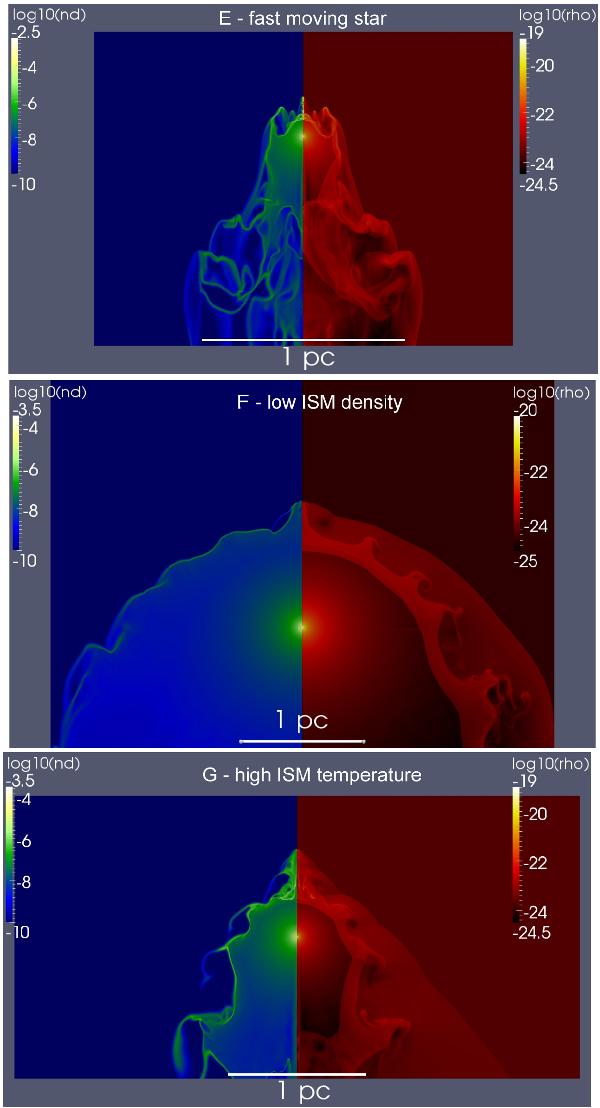Fig. 10

Similar to Fig. 8, but for simulation E after 6.5 × 104 years (top), F after 5.0 × 104 years (middle), and G after 1.0 × 105 years (bottom). Top panel E): the entire shocked gas region is completely unstable due to a combination of radiative shocks and the high ram-pressure from the stellar motion in the ISM. The high ISM ram pressure brings the bow shock close to the star and the region behind the star is filled up with shocked gas due to the turbulent motion of the bow shock. Middle panel F): the low-density ISM results in a very extended bow shock region. Bottom panel G): due to the high ISM temperature, the radiative cooling in the shocked ISM is relatively ineffective. Since the shocked ISM maintains a high thermal pressure, due to the enforced minimum temperature of 8000 K, the shocked gas fills the void behind the moving star.
Current usage metrics show cumulative count of Article Views (full-text article views including HTML views, PDF and ePub downloads, according to the available data) and Abstracts Views on Vision4Press platform.
Data correspond to usage on the plateform after 2015. The current usage metrics is available 48-96 hours after online publication and is updated daily on week days.
Initial download of the metrics may take a while.





